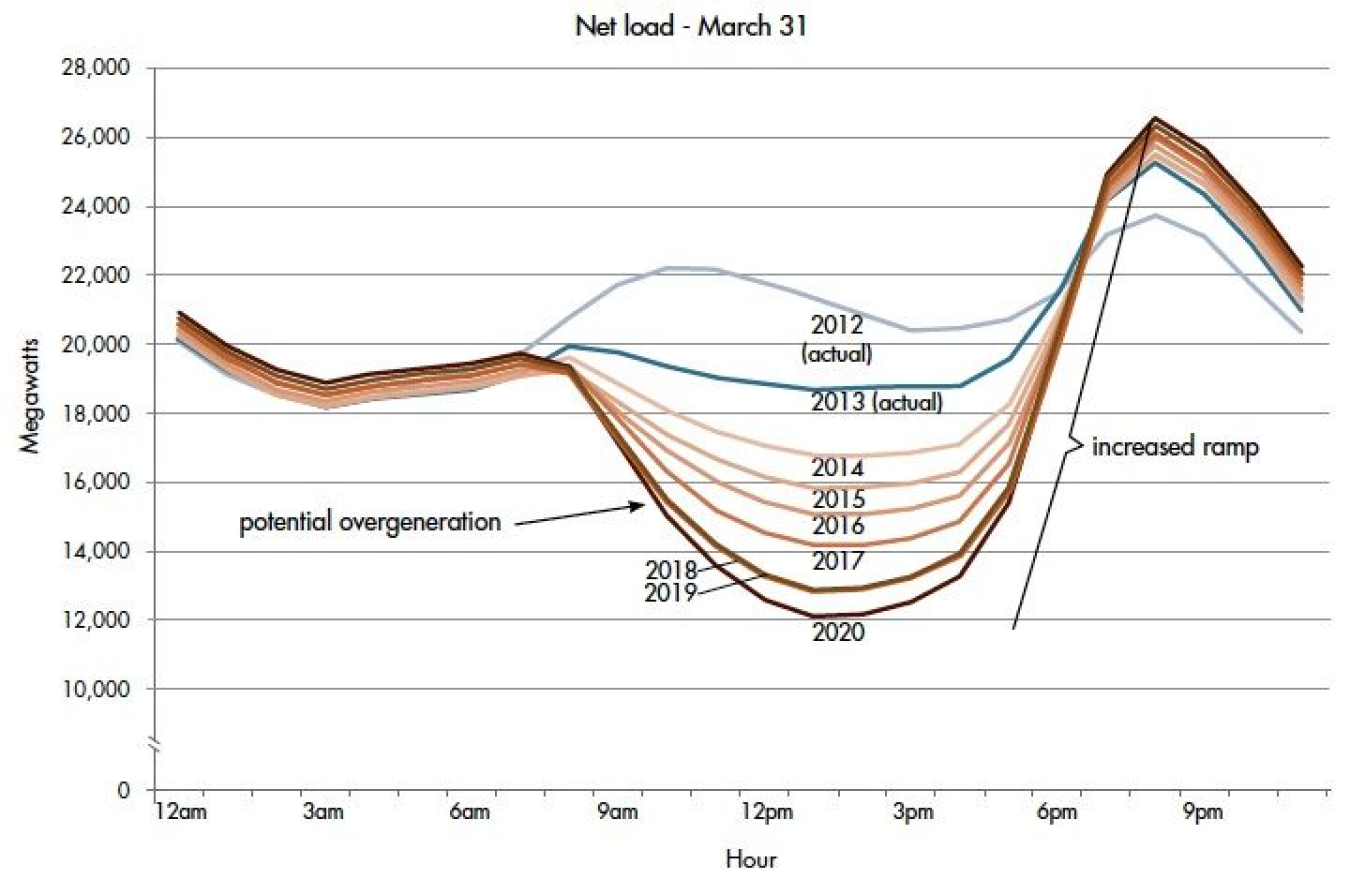
Duck Curve in the CAISO Zone (courtesy CAISO)
The Duck Curve
Originating from California’s energy data, the duck curve illustrates the discrepancy between solar power generation and actual energy demand throughout the day. During peak sunlight hours, solar panels generate a surplus of electricity, which isn’t fully utilized because the demand isn’t as high. As the sun sets and people come home and turn on appliances, demand spikes just as solar power availability decreases. This mismatch creates a graph that looks like the silhouette of a duck, with a pronounced peak in the late afternoon and evening—hence the name "duck curve."
Germany's energy landscape is quite diverse, utilizing a mix of renewable sources, nuclear power, and fossil fuels. Unlike California, where solar power plays a dominant role, Germany has a more balanced mix, which includes wind and bioenergy. This diversification helps to smooth out the load curve, avoiding extreme peaks and valleys characteristic of the duck curve. However, as solar capacity increases, Germany could begin to see a shift towards a more pronounced duck curve, especially during the long summer days in the southern regions.
To effectively plan for solar energy generation, understanding regional solar irradiance is crucial. In Germany, solar irradiance varies significantly with the highest levels found in the southern states like Bavaria and Baden-Württemberg. These regions can be likened to California in terms of their potential for solar power generation, making them key areas for the development and expansion of solar energy facilities. Germany's commitment to renewable energy, underpinned by the Energiewende initiative, has significantly boosted solar power adoption. Although it currently lags behind California, the ongoing reduction in solar technology costs and supportive governmental policies are likely to accelerate the deployment. Predictions suggest that Germany could reach or exceed California's current solar penetration within the next ten to fifteen years, provided these trends continue. In California, the duck curve presents several technical challenges for grid stability. The most significant is the need for rapid ramp-up of alternative energy sources in the evening as solar production wanes but demand soars. This situation often leads to issues like overgeneration during the day, requiring grid operators to curtail solar production or export excess electricity at a loss.California’s Solutions to the Duck Curve
California has implemented a multifaceted approach to manage the challenges posed by the duck curve. Key strategies include:
- Energy Storage: Deploying large-scale battery systems to store excess solar energy during peak production and discharging it during high demand periods in the evening.
- Demand Response Programs: Encouraging consumers to shift their energy use to off-peak hours through incentives, thus flattening the demand curve.
- Grid Enhancements and Interconnections: Upgrading the grid to handle large flows of renewable energy and increasing interconnections with other states to share the load.
Lessons for Germany
As Germany faces its own potential duck curve, it can learn from California’s proactive measures:
- Invest in Energy Storage: Germany should continue to invest in and expand its energy storage capabilities to mitigate the effects of solar variability.
- Promote Smart Grid Technologies: Implementing advanced grid technologies and infrastructure upgrades can increase the grid's ability to manage shifts in energy supply and demand.
- Enhance Demand Side Management: Encouraging energy usage that aligns with solar availability can help flatten peak demand curves.
- Leverage EU Energy Integration: By taking advantage of the broader EU electricity market, Germany could balance solar power surpluses and deficits across a wider area, enhancing stability.
Germany stands at a pivotal point in its energy transition. By observing and adapting strategies from regions like California, Germany can not only meet its renewable energy goals but do so in a way that maintains grid stability and maximizes the benefits of solar power. The future is bright, and with the right approaches, both sunny California and industrious Germany can lead the way toward a sustainable, solar-powered world.